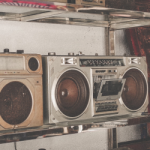In the vibrant world of fashion, the question “Who is a fashion designer?” unfolds a narrative of creative visionaries shaping industry trends. These individuals, who is a fashion designer, not only master the art of garment creation but also play a pivotal role in defining the essence of style and self-expression.
This blog dives into unraveling the intricacies of who is a fashion designer, fashion designer meaning, highlighting who is the best fashion designer in India, delving into fashion designer incomes, fashion designer benefits, and more. Join us in exploring the intersection of artistry and commerce, where iconic looks are curated, and the identity of those who is a fashion designer unfolds.
Table of content
Who is a Fashion Designer
How to Become a Fashion Designer
Roles and Responsibilities of a Fashion Designer
Who is the Best Fashion Designer in India
Fashion Designer Benefits
Scope of Fashion Design
Salary of a Fashion Designer in 2024
Top Courses to Become a Fashion Designer
Who is a Fashion Designer?
Fashion designer definition: A fashion designer means a creative professional who conceptualizes and brings to life innovative clothing and accessories. These individuals, who is a fashion designer, play a pivotal role in shaping the ever-evolving landscape of style, combining artistic vision with technical expertise. In this blog, we’ll delve into the intricacies of who is a fashion designer, exploring their role, the best in India, income, benefits, and more, shedding light on the dynamic world where artistry and fashion converge.
How to Become a Fashion Designer?
Embarking on the fulfilling journey to become a fashion designer involves a strategic blend of education, practical experience, and continuous skill refinement. The pivotal step begins with fashion designer qualifications, which span a spectrum from short-term certificates for fashion design, providing individuals with a solid foundation. Formal education becomes a cornerstone, offering insights into design principles, pattern-making, and the intricacies of garment construction.
Aspiring designers delve into hands-on experiences through internships, where they gain valuable insights into the real-world dynamics of the industry. This practical exposure not only hones their technical skills but also fosters a deeper understanding of the collaborative and fast-paced nature of the fashion world. Simultaneously, staying abreast of evolving industry trends becomes imperative, ensuring designers remain at the forefront of innovation.
Creative expression takes center stage as designers learn to conceptualize and bring to life unique designs. The journey involves honing artistic flair, developing an acute eye for detail, and mastering the craft of seamlessly blending colors, textures, and silhouettes. Understanding fabrics and their properties becomes second nature, empowering designers to make informed choices in creating garments that are not only visually appealing but also functionally sound.
Successful fashion designers are characterized by their ability to synthesize creative intuition with technical expertise. This ongoing process of skill refinement and adaptation allows them to navigate the ever-changing landscape of fashion with finesse. Ultimately, the journey to become a fashion designer is marked by a commitment to continuous learning, a passion for innovation, and the pursuit of excellence in the realm of style and self-expression.
Roles and Responsibilities of a Fashion Designer
Here are the roles and responsibilities of a fashion designer:
- Conceptualization: Generate creative ideas for clothing and accessory designs.
- Sketching: Translate design concepts into visual representations.
- Fabric Selection: Choose appropriate materials based on design and functionality.
- Production Oversight: Supervise the manufacturing process to ensure quality and adherence to design.
- Trend Monitoring: Stay updated on industry trends and incorporate them into designs.
- Collaboration: Work closely with teams, including pattern-makers and production staff.
- Brand Alignment: Ensure designs align with the brand’s aesthetic and vision.
- Fashion Shows/Events: Participate in showcasing designs through fashion shows, presentations, and photo shoots.
- Adaptability: Respond to feedback and make adjustments to designs as needed.
- Detail Orientation: Pay meticulous attention to details in design and execution.
- Style Sense: Possess a keen sense of style and an understanding of market preferences.
Who is the Best Fashion Designer in India
There are several fashion designers in India who are know for their works, some of them are:
- Manish Malhotra: Renowned for his bridal couture and Bollywood collaborations.
- Sabyasachi Mukherjee: Known for his traditional and ethnic designs, especially in bridal wear.
- Ritu Kumar: A veteran in the industry, celebrated for her diverse range of designs.
- Tarun Tahiliani: Known for blending traditional aesthetics with modern sensibilities.
- Anita Dongre: Recognized for her contemporary and sustainable fashion designs.
Fashion preferences change, and new talents may emerge, so it’s advisable to explore the latest trends and fashion events to stay updated on the current frontrunners in the Indian fashion industry.
Fashion Designer Benefits
Embarking on a career in fashion design offers a myriad of benefits, including:
- Creative Expression: Designers express creativity through fashion.
- Diverse Career Paths: Opportunities in various fashion sectors.
- Global Recognition: Potential for international acclaim.
- Entrepreneurial Ventures: Launching personal fashion lines.
- Trendsetting Influence: Shaping and influencing fashion trends.
- Networking Opportunities: Building connections with industry professionals.
- Financial Rewards: Lucrative potential, especially with success.
- Job Satisfaction: Fulfillment in seeing designs come to life.
- Continuous Learning: Staying updated on evolving trends.
- Brand Collaborations: Opportunities to collaborate with prestigious brands.
Scope of Fashion Design
Upon becoming a fashion designer, individuals unlock a realm of diverse opportunities within the industry. Armed with the necessary fashion designer qualifications, such as a degree in fashion design or relevant certifications, they can contribute their creativity to established fashion houses or brands, shaping seasonal collections and staying at the forefront of industry trends. Alternatively, entrepreneurial spirits may embark on launching their fashion labels, defining their unique design aesthetics, and catering to specific market niches.
The scope extends to freelance projects, specialized areas like bridal or couture design, costume design for various media, and roles in retail, merchandising, or buying. Fashion designers can also explore education, textile innovation, consulting, styling, and journalism, creating a dynamic and multifaceted career landscape. The qualifications acquired during their educational journey serve as a solid foundation, providing the necessary skills and knowledge to thrive in the dynamic and competitive field of fashion design. The scope after becoming a fashion designer extends beyond traditional roles, offering a canvas for individuals to tailor their careers to align with their passions, leveraging the qualifications earned for success and adaptability in this ever-evolving industry.
Salary of a Fashion Designer in 2023
As of 2023, the salary of a fashion designer can vary based on factors such as experience, location, employer, and the designer’s level of recognition in the industry. On average, entry-level fashion designers may earn a salary ranging from INR 3 to 5 lakhs per annum. With several years of experience, mid-level designers can expect salaries in the range of INR 6 to 12 lakhs per annum. Established and highly recognized fashion designers, especially those with their own labels or collaborations with prestigious brands, can command higher salaries, reaching well beyond INR 20 lakhs per annum or more.
It’s important to note that these figures are approximate and can vary significantly based on individual circumstances and the prevailing conditions of the fashion industry. Additionally, designers may also earn income through freelance projects, collaborations, or entrepreneurial ventures, which can contribute to their overall financial success.
Top Courses to Become a Fashion Designer
Embarking on a journey toward a dynamic career in fashion design involves enrolling in reputable programs that provide a strong foundation in design principles and practical skills. Here are the top courses to become a fashion designer, each offering a unique approach to nurturing creative talents and preparing individuals for success in the industry: · AAFT Online – Diploma in Fashion Design: This comprehensive program covers design principles, pattern-making, textiles, and garment construction, providing a solid foundation for aspiring fashion designers.
- National Institute of Fashion Technology (NIFT) – Bachelor of Design (B.Des): NIFT is renowned for its design programs, offering a Bachelor’s degree in design with specializations in fashion design. It provides a holistic approach to design education.
- Pearl Academy – Fashion Designing Courses: Pearl Academy offers various programs in fashion design, emphasizing practical skills, industry exposure, and creativity. Their courses cater to both undergraduate and postgraduate levels.
- Symbiosis Institute of Design (SID) – Bachelor of Design (B.Des): SID offers a Bachelor’s program in design with a focus on nurturing creative talents. The curriculum includes fashion design, preparing students for diverse roles in the industry.
- JD Institute of Fashion Technology – Diploma in Fashion Design: JD Institute provides diploma programs in fashion design with a hands-on approach, covering design techniques, industry trends, and practical skills needed for a successful career in fashion.
These courses are recognized for their quality curriculum, industry relevance, and the potential to equip aspiring fashion designers with the necessary skills and knowledge to thrive in the competitive fashion industry.
Conclusion
In conclusion, delving into the vibrant realm of fashion design is not just a career choice; it’s an odyssey of creativity and innovation. Aspiring designers, equipped with the skills honed through top-notch courses, embark on a journey where they become the architects of style. Beyond the stitches and seams, fashion designer benefits unfold the sheer joy of artistic expression to the versatility of a career with global recognition. These professionals sculpt trends, weave networks, and continually learn, making their mark on the dynamic canvas of the fashion world. In this realm, the titles of “fashion artist” and “fashion designer” signify not just professions but gateways to a world where passion meets profession, and each design is a brushstroke on the ever-evolving canvas of style.
























